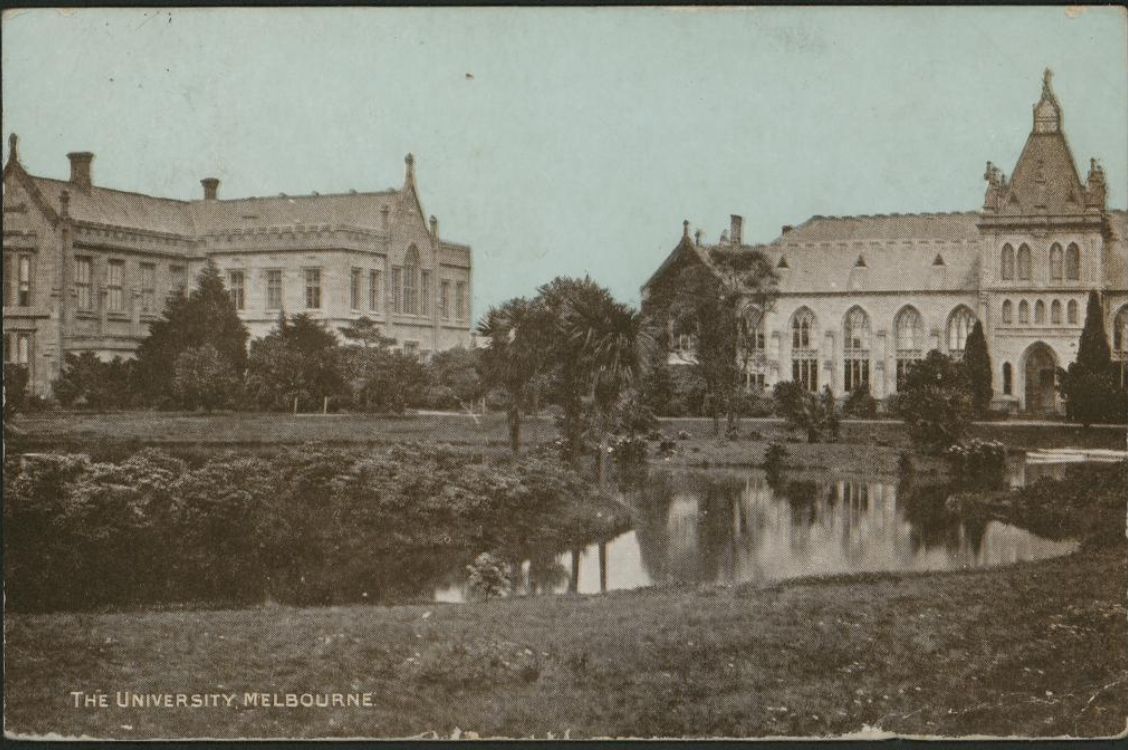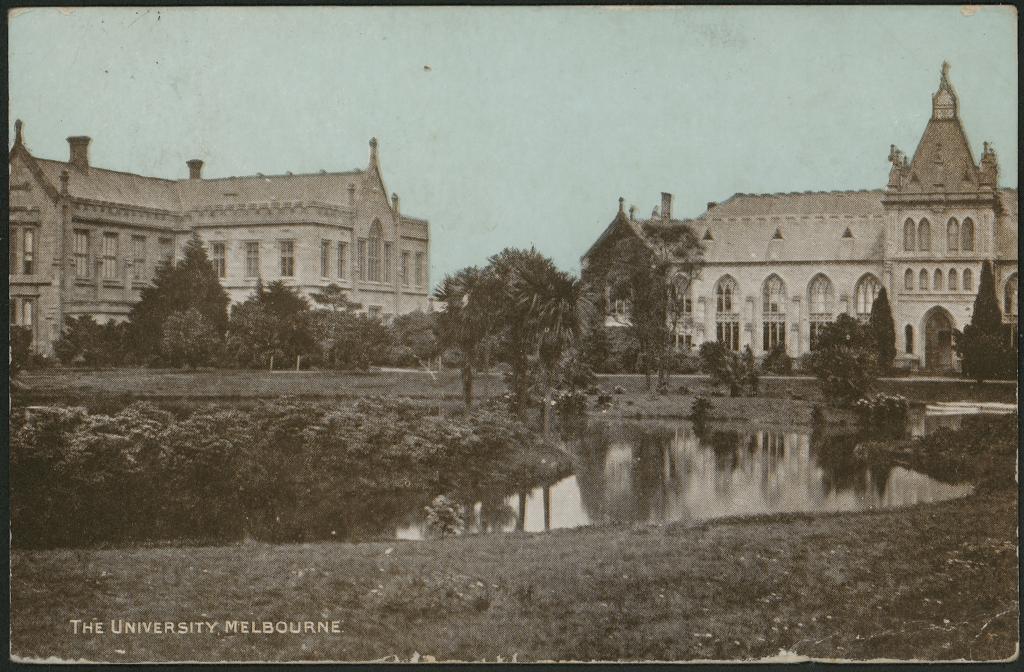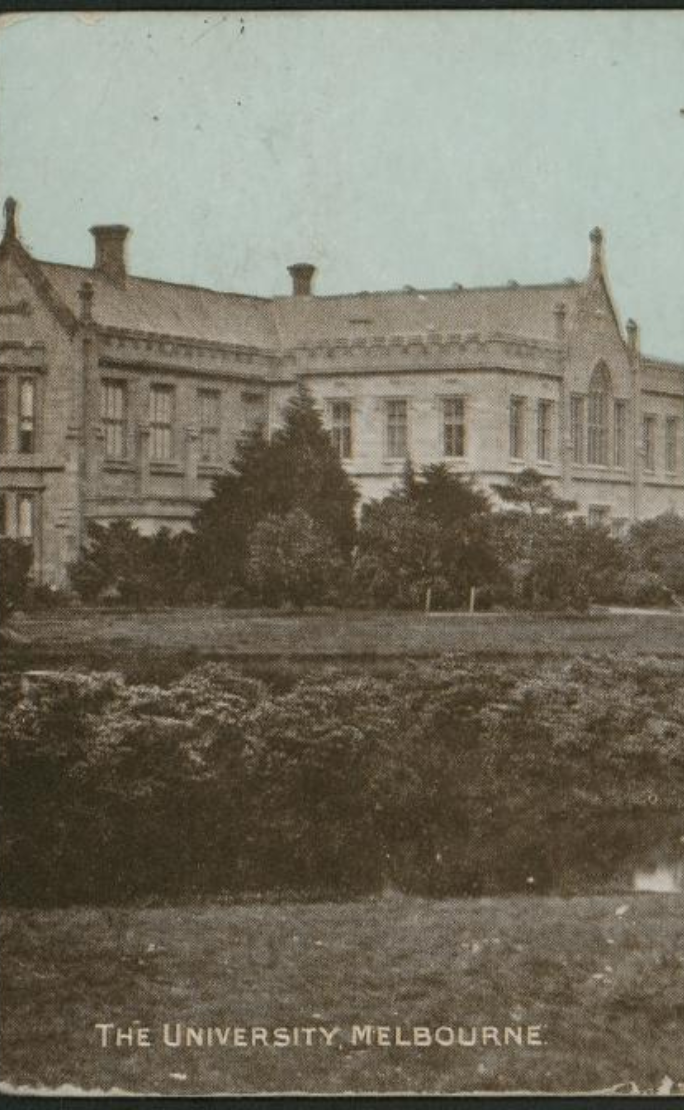
- Free Article: No
- Contents Category: Commentary
- Custom Article Title: ‘You take um up my land for me’
- Review Article: Yes
- Article Title: ‘You take um up my land for me’
- Article Subtitle: An Indigenous history of the University of Melbourne
- Online Only: No
- Custom Highlight Text:
Like the nation at large, the University of Melbourne has a troubling history. Stretching back to Victoria’s early colonisation, that history is entwined with the oppression and dispossession of Australia’s Indigenous peoples.
- Featured Image (400px * 250px):

- Alt Tag (Featured Image): Zoë Laidlaw on the Indigenous history of the University of Melbourne
A confrontation with this particular history is overdue. More generally, truth-telling projects are today a feature of Australian life: often – as in the case of the University of Melbourne – encompassed by a Reconciliation Action Plan. While (potentially) mortifying in the short term, a frank appraisal of the past and a commitment to do better can help an institution accrue social capital, not least with non-Indigenous and international audiences less concerned by questions of restitution and reparations. On the other hand, Indigenous people bear a far greater share of the burden such ‘reconciliation’ projects require, often while themselves navigating the intergenerational legacies of colonial harm. Intended to be restorative, truth-telling demands significant emotional labour from Indigenous people.
Given this imbalance, whether in terms of rewards or labour, non-Indigenous Australians should do more to recognise how the histories embedded in, and sometimes embodied by, the nation’s university campuses, private schools, and cultural institutions often take colonialism for granted, even when they do not celebrate it. In practice, this means looking beyond the most egregious of colonial crimes to the underlying structures of colonisation. When there is no smoking gun – no compelling evidence of participation in a massacre, no Indigenous remains undoubtedly robbed from graves – institutions are quick to sigh in relief. Non-Indigenous Australians routinely remark on the unlikelihood of any society being able to scrutinise past practices without a sharp intake of breath. They are reluctant to question the generosity of philanthropists whose mores were ‘of their time’. But a benefactor who wasn’t a murderer may still have been a thief.
The University of Melbourne was established in 1853, one of early Victoria’s most enduring and successful creations. Its founders stressed their commitment to ‘civilisation’ and Britain’s imperial mission. The university was intended, in the words of one benefactor, to make Melbourne ‘the Athens of Australia, and the Oxford of the Southern Hemisphere’. Such assertions depended on colonisers’ claims to legitimately occupy the Wurundjeri Woi-wurrung Country on which the university was built. Both the university’s very foundation and the knowledge it generated and imparted to students served to validate the presence of settler colonisers, and especially their prosperous élites, in the lands around Port Phillip Bay.
 The University of Melbourne, 1905. Gift of Elizabeth Bullard, 1967 (Powerhouse Museum Collection via Wikimedia Commons)
The University of Melbourne, 1905. Gift of Elizabeth Bullard, 1967 (Powerhouse Museum Collection via Wikimedia Commons)
Profits made by those élites on unceded Indigenous Country flowed into the early University of Melbourne, supporting its late-nineteenth-century expansion. In 1874, when the colonial government refused to provide funds to build a ceremonial hall befitting the young university’s sense of itself, Samuel Wilson stepped in with a gift of £30,000: Wilson Hall opened in 1879. In the 1880s, Francis Ormond gave the university £20,000 to establish a chair in Music; Ormond also provided more than £112,000 to establish a college for young Presbyterian men studying at the secular university or training for the clergy. His co-religionist, John Dickson Wyselaskie, bequeathed £12,000 to create university scholarships in six subjects; today each pays $20,000 annually. In 1866, John Hastie left more than £19,000 to support student exhibitions, still awarded by the university, in Philosophy, Logic, and Ethics.
All these benefactors were prominent participants in the rapid expansion and consolidation of Victoria’s pastoral industries. If not themselves (and it is difficult to be certain) directly violent towards the Indigenous peoples whose lands they occupied, each was aware of this violence and profited from it. Wilson, for example, arrived in Victoria in 1852. By then, his two older brothers were well established in the Wimmera, although ‘being afraid of the natives’ they had abandoned their first property in 1845. In partnership, Wilson and his brothers acquired huge pastoral leaseholds across Victoria’s north-west and the Riverina.
By the time he donated to the university two decades later, Wilson’s annual income was estimated at £100,000 and he owned more than 600,000 sheep. As an Honorary Correspondent for Victoria’s Board of Protection of Aborigines, Wilson distributed government rations, blankets, and clothing to the Wotjoboluk people. Reporting to the colonial government, Wilson acknowledged that his estate, Longerenong, ‘once had no other owner’ than the Wotjoboluk. He lamented the consequences of their dispossession, while emphasising that he (sometimes) paid Indigenous workers comparable rates to their non-Indigenous counterparts. Wilson framed the expropriation of Indigenous land as an unavoidable corollary to ‘progress’.
In 1873, Wilson relocated to Ercildoune, a pastoral property to the west of Ballarat, for which he paid a staggering £236,000. Indigenous workers were less numerous there than in the Wimmera and Wilson ceased reporting to the Board of Protection. He did come into sustained, if superficial, contact with at least one Wadawurrung man, Mullawallah (c.1821–96), also known as ‘William Wilson’ and ‘King Billy of Ercildoune’. Mullawallah resided intermittently at Ercildoune, where Wilson presented him several times as an amusement to visiting British dignitaries. Misleading contemporary press reports described Mullawallah as ‘the last of his tribe’, and implied that he used the surname ‘Wilson’ to acknowledge Wilson’s largesse. The same sources reveal Mullawallah was abused by Wendouree larrikins, subjected to state incarceration, and suffered a pitiful and public death. Mullawallah’s reiterated claims to his land – he sang ‘You take um up my land for me’ – were reported in a tone that veered between elegiac and mocking.
Wilson’s gift to the university helped secure him a knighthood in 1875, and he was elected to the Victorian Legislative Council the same year. In 1881, Wilson returned to Britain, leasing the grand Hughenden Manor from the estate of former prime minister Benjamin Disraeli. He entered London society and sat in the House of Commons for Portsmouth. Two of his children married into the English aristocracy. He died in 1895, in his early sixties.
Back in Parkville, the University of Melbourne’s ceremonial life played out in Wilson Hall for generations before it was destroyed by fire in 1952. A rebuilding appeal raised nearly £100,000, although the government (again) refused to contribute. The modernist replacement, opened in 1956, retained the name Wilson Hall and remains a dominant feature of the campus. In this way, Wilson’s original legacy continues to shape, and to be commemorated by, the University of Melbourne.
Those other notable university benefactors – Francis Ormond, John Dickson Wyselaskie, and John Hastie – all established their pastoral ventures in western Victoria even earlier than Samuel Wilson. They were, if anything, even more proximate to the murderous dispossession of the Wadawurrung, Djab wurrung, and Djargurd wurrung from whose land they profited. Their hugely successful businesses, like Wilson’s, operated alongside those they had usurped and sometimes depended upon their labour.
Histories similar to these underpin the foundation and shape the continuing prosperity of numerous Australian endeavours, including schools, churches, and cultural institutions. Together, they represent a profoundly important and unfair transfer of economic resources from Indigenous to non-Indigenous peoples. Unthinkingly celebrating the philanthropic largesse of those who themselves excused Indigenous dispossession as a civilising or imperial project is to be complicit in this theft. Institutions and their constituent communities should do better. This raises, as such projects tend to do, troubling questions beyond history itself. Most importantly of all, what comes next? How will the University of Melbourne and its counterparts address the ongoing benefits derived from their settler-colonial origins?
This article is one of a series of ABR commentaries on cultural and political subjects being funded by the Copyright Agency’s Cultural Fund.



Comments powered by CComment